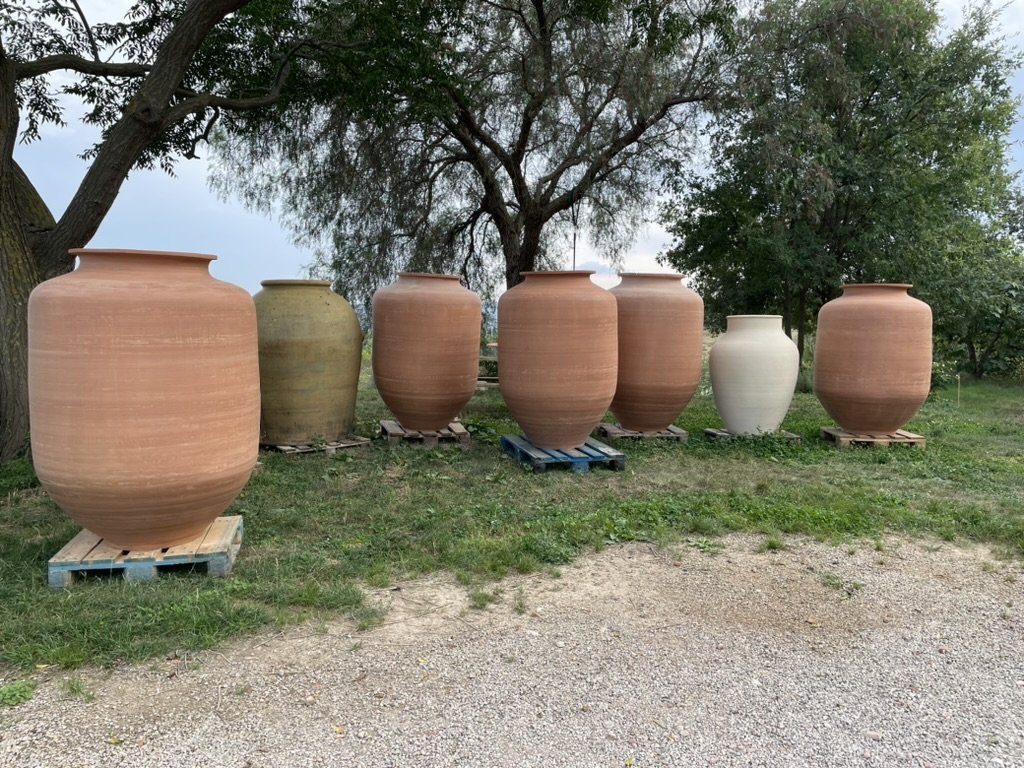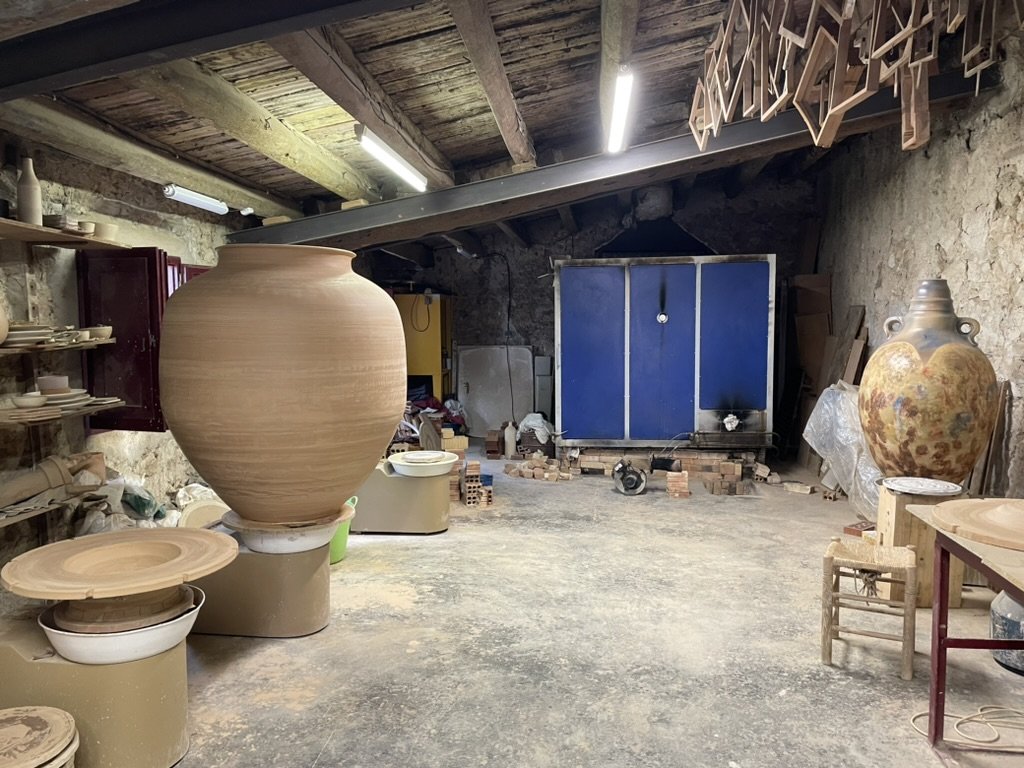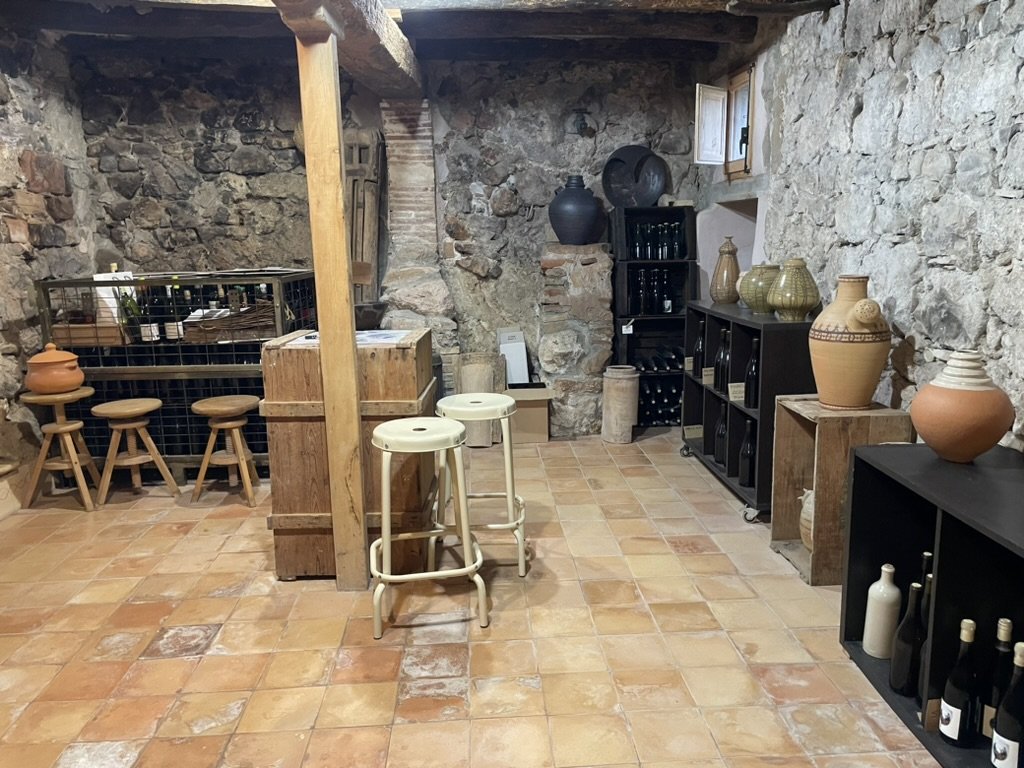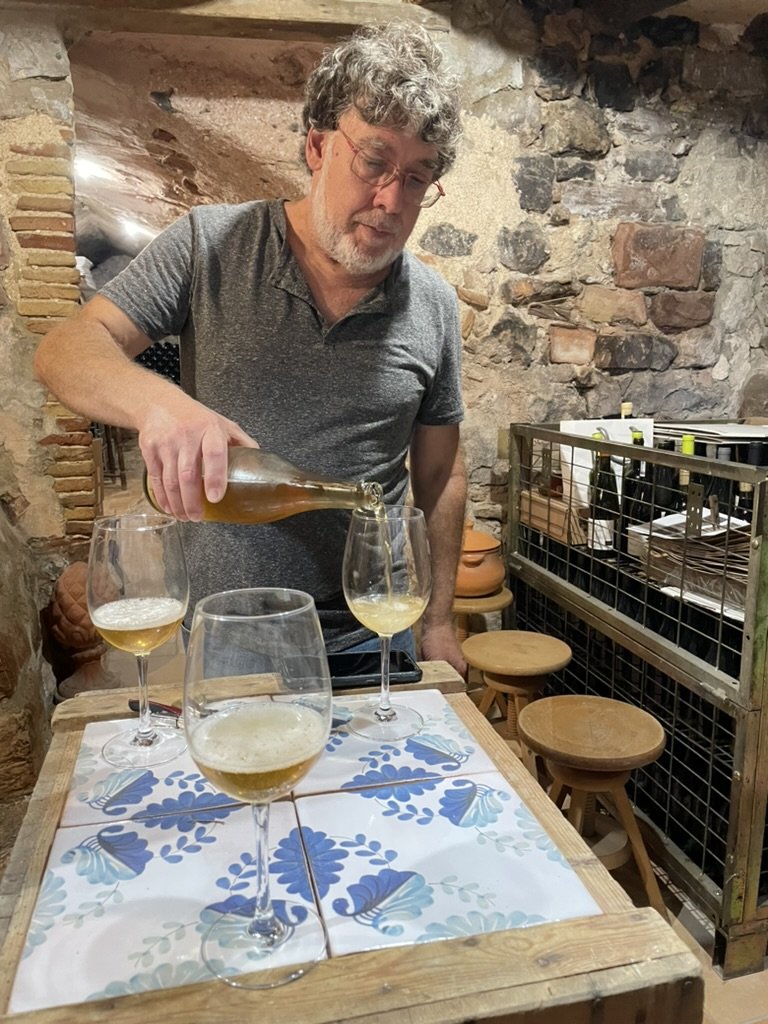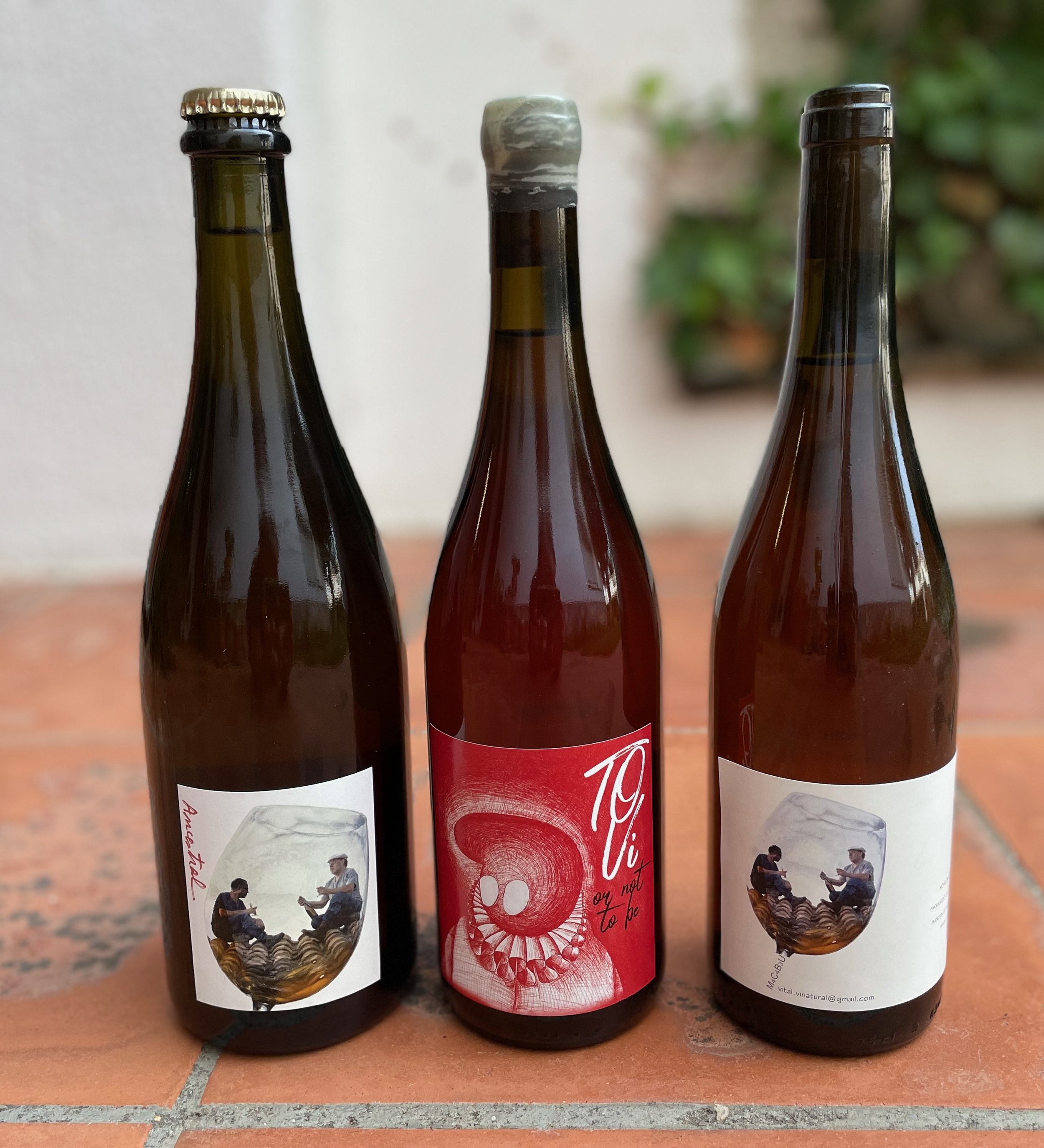Carles Llarch: Craftsman in clay
Alan Nance spends the afternoon with a master amphora maker, and samples some memorable wine along the way
The use of clay vessels for fermentation and aging of wine is one with a long history. In present-day Georgia, where they are known as qvevri, archaeological evidence dates the practice back to the Neolithic period, around 8000 years ago. Here in Spain, the use of tinajas (clay amphorae) for making wine spans at least two millennia. Abandoned in more recent times by all but a small number of artisanal producers, they appear to be undergoing something of a renaissance as trends in wine making and consumption shift once more.
In the context of an individual life, the road that has led Carles Llarch to becoming a renowned crafter of amphorae for wine making has also been long. I first met Carles earlier this year during a presentation he gave at the Cuvée Bottleshop in Barcelona, and was delighted when he kindly agreed to my request for a visit to his workshop. What I didn't foresee was that he would be so generous with his time, and that I would return home brimming with excitement about all he had shared with me.
Carles holding forth in his workshop
Given the reputation he has acquired in Catalonia and further afield, I was surprised to learn that in his youth he had had no interest in wine, this despite the fact that his maternal grandfather had worked a small parcel of land near to Sant Martí Sarroca (in the heart of the Penedès region), where he grew grapes and sold them on to local producers, while on the other side of the family, Carles' father had worked for many years in wine sales and distribution.
Yet the Penedès in the 1970s and 80s was a very different place to what it has become in recent years. From 2025, all wines that bear the DO Penedès label will have to be made from organically farmed grapes, a situation far from what Carles remembers from his childhood:
There were lots of natural springs in the area, and my father said to me one day, I must have been about 10 years old: "don't even think about drinking from any of these springs, they run under the vineyards…" […] what he meant was that all the groundwater was contaminated… with synthetic chemicals.
Whether for this or other reasons, the discipline to which he was drawn as a young man was not wine but ceramics. After completing his initial studies, he started working for a company that restored ceramic features of public and private buildings, including in Barcelona, a city renowned for its Modernista (Catalan art nouveau) interiors and façades. A project that he particularly remembers involved restoration work to the bell tower spire of the Basilica de Santa Maria in Vilafranca del Penedès (a place and building well worth visiting if you're in the area). Hungry to learn more, Carles also travelled to other countries (what is now the Czech Republic in 1991, and Lithuania in 1996) to learn about the work and traditions of ceramicists elsewhere.
Following the financial crash in 2008, and with a declining demand for specialists of his calibre within the construction-related sector, he turned his attention to what he considered was a crucial issue for the future: water, and how ceramic filters might, depending on the type of clay from which they were made, be used to remove different contaminants (e.g. heavy metals). It was during this period that someone asked him if he could make a clay vessel for making wine, a question that piqued his curiosity and marked a turning point in his career.
He spent the next year or so experimenting with different types of clay and exploring how they interacted with wines of different characteristics (in terms of tannic structure, alcohol, etc.). However, he soon realized that if he was going to make amphorae for wine, he would also need to learn more about how wine is made. At first he limited himself to talking to local producers, but he eventually came to the conclusion that true understanding would only be achieved by making his own wine – in his own amphorae, of course. I will return to his wines later.
At this point, around 2011-12, there was nobody making amphorae that were well-suited to the white wines of the Penedès. As Carles told me:
There were people here who bought amphorae from La Mancha, which were OK for red wines but no good for whites from Penedès […] it's because of the composition of the clay, the free carbonates, there's a lot of calcium, and that causes precipitation of all the tartaric acid that is naturally in the wine […] so you'd have to correct for that, with acidifiers, to save the wine.
I also learned that the amphorae used in some regions were often coated on the inside with resin, which, he told me, not only defeated the object of using such a vessel but was also a sure sign that the clay was of poor quality.
Carles showing me a fragment of one of his own pots, alongside another made from poor quality clay with a resin lining
His mission therefore became matching the type of clay to the wine that was going to be made, and he now works with around ten different types, each of which gives rise to an amphora of particular characteristics. As he is quick to point out, however, elements such as the chemical composition of the clay and the degree of porosity (which influences the speed with which the wine will be subject to micro-oxygenation) are only one factor to consider – the final outcome will also depend on the grape variety, the quality of the harvest and the profile being sought by the winemaker. For these reasons, his amphorae are made to measure, in dialogue with the client wine maker.
When I work for someone, I think about that person, and about their wines […] apart from what you get from the material, the chemical composition of the clay, I think this emotional side is important… if you're an artisan there has to be a human relationship that goes beyond a purely commercial one… you have to explain the concepts behind making a wine in amphorae, where modern winemaking techniques might not be appropriate… because a winemaker's usual approach might be better suited to working in stainless steel.
Carles next to one of his clay mixers
Entering his workshop I get to see some of the pieces he is currently working on. Everything is made to order and each piece is unique (e.g. a 200 L amphora made for one customer may have a slightly different shape to another of the same capacity made for someone else). This element of improvisation and creativity helps him to remain engaged with each individual project, and, he tells me, prevents him from becoming bored with what would otherwise be an overly mechanical process.
The interior of Carles' workshop, showing a finished 550 L amphora made from white clay in the process of drying, prior to firing. In the background (blue doors), his largest kiln
Nevertheless, there is a series of steps common to all the amphorae he makes:
Steps in the process of amphora making
The number of amphorae he produces per year varies, but he estimates that it is always fewer than forty. Given the number of wineries in Spain that now include a wine made in amphora in their portfolio, I asked him where all these amphorae came from:
Well, it depends, but they might be imported from as far away as China […] And there's nothing wrong with that in principle, after all, my mobile phone comes from China… but what I don't agree with is when a winery doesn't acknowledge this and markets itself as being 100% local […] for some people, an amphora may be little more than a marketing ploy.
It was clear to me by this stage that the only marketing strategy Carles needed was the quality of his work and his reputation among a growing cohort of winemakers who share his philosophy. In Catalonia, his list of clients includes producers such as Parés Baltà, Joan Rubió, Nuria Renom, Còsmic Vinyaters, Alta Alella, Enlaire Vins and Mont-Rubí, while elsewhere in Spain, Raúl Moreno (in Jerez) makes his red wine La Esencia using a 1000 L amphora made by Carles. Further afield, examples of Carles' craft may be found in Belgium, England, France, Germany, Greece, Portugal, Russia, Ukraine and the USA.
So what about the wines that are made by this man who for much of his early life had no interest in wine? As we walk from his workshop to the stone farmhouse next door where he lives, he tells me how he has never studied winemaking in any formal sense. When he started out, he collaborated with a local enologist to learn the basics, but after a while he started experimenting and breaking the rules. When he liked the outcome, he carried on his way, which might be described as a hands-off but watchful approach.
Until recently, he had to purchase grapes locally from longstanding acquaintances (all of whom farmed organically), but now that he has finally been able to buy the property in which he has lived and worked for years as a tenant, he will also have his own parcels, which he tells me are mostly planted with Parellada. He adds, however, that this will be another learning process as he has no real experience of tending to a vineyard. I don't doubt, however, that he will quickly learn and work that piece of land with the same curiosity and respect that he works the clay.
As I enter his tasting room, the first thing I notice is the array of bottles lined up along the length of a stone ledge, and Carles explains to me that they are just some of the wines that various clients have made over the years in one of his amphorae.
A view of the tasting room, with a selection of wines made using his amphorae
Another view of the tasting room
The first wine of his own that he opens for me to try is a pét-nat, a sparkling Macabeu (2021) made using the ancestral method. It is clear and bright on the eye, with fine bubbles that integrate even more as we sip and talk. This, he tells me, is how he likes his sparkling wines, with just a subtle presence of CO2, and this is also the only wine he serves cold. His other wines he drinks at a slightly higher temperature, so as not to mask their primary characteristics.
Carles pouring a glass of his Macabeu Ancestral 2021
Aside from Macabeu, he works with Parellada, Xarel·lo and Sumoll, although total production is very small, just a few hundred bottles of each, and even then, not all may be made each year (this means that you will only find his wines in specialist bars, such as Monvínic in Barcelona). For all his wines the process begins with foot treading of the grapes, followed by maceration on the skins and stems (this is the case for both white and red grape varieties). None of his wines are filtered or fined, and no sulfites are added at any stage.
Three of Carles' wines. From left to right, the Macabeu ancestral, a Parellada and a still Macabeu. Note how the name of the Parellada plays with the fact that the Catalan word for wine (vi) is pronounced similarly to the English word be, hence the Shakespearean-inspired label
For wines made from white grape varieties, the maceration usually lasts for 45-60 days, followed by a gentle press and transfer to another amphora for aging prior to bottling. The Sumoll is a case apart, as here the grapes are macerated on the skins for 7 months and then aged for a further 14 months in a white clay amphora. He tells me how an enologist friend thought he was crazy to consider macerating the Sumoll for so long, believing that it would render it undrinkable. Carles suspected, however, that this would not be the case, as his use of white clay for the amphora would initiate a chemical reaction that, over those 7 months, would tame the tannins and astringency that is characteristic of this variety. Based on the Sumoll 2021 that is in my glass as I write this, he was right, for while a little rustic overall, the wine is bright and fresh and decidedly moreish.
If, by now, I am convinced that Carles has learned to work not just clay but grape as well, he himself is adamant:
I always say I don't make wine… what I do is try to understand what the wine needs, I'm there to listen, not to give orders, it's the wine that gives the orders, and then you have to decide what is needed…
Postscript
The day after my visit, I reached into the box of six wines that I had purchased from Carles the previous afternoon and pulled out a Macabeu 2020 to drink with my wife over lunch. The least I could do, I thought, was raise a glass to this master craftsman who had allowed me to experience his profound connection to place. The wine was energizing, alive, and as it lingered on my palate, a thought hit me: my own path in life may have begun far from here on the Atlantic coastline of North Cornwall, but this, now, was the taste of home.
